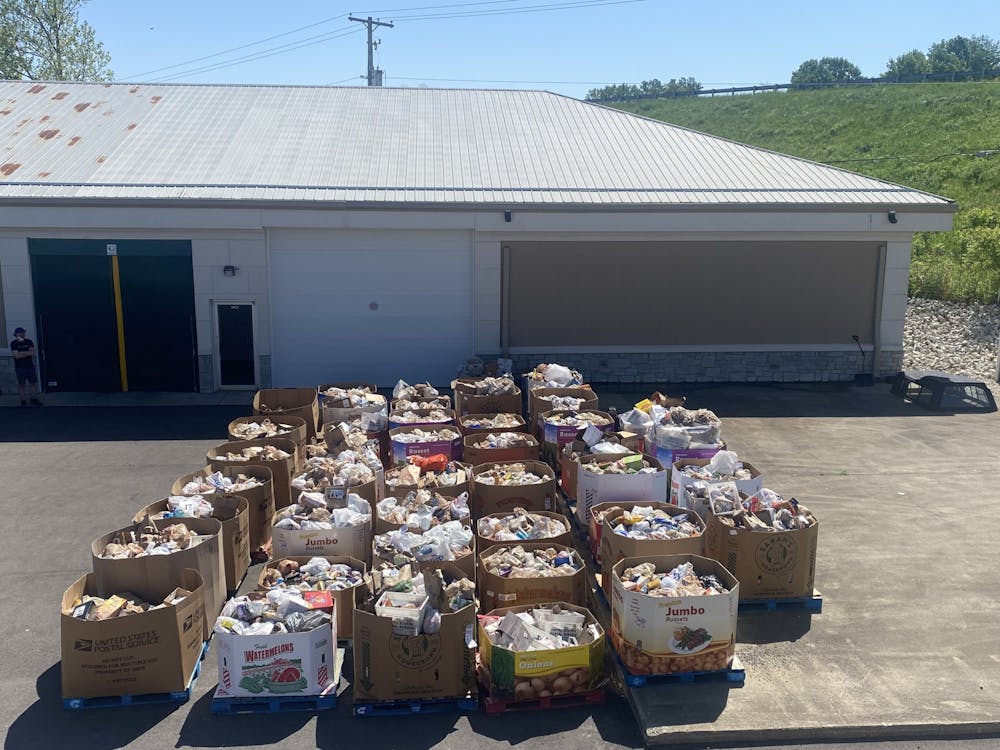The Indiana Department of Agriculture announced July 21 that Indiana food banks across the state would receive $2 million in funding, doubling last year’s funding of $1 million.
According to the Indiana Department of Agriculture, there are 11 food banks in Indiana. These food banks store millions of pounds of food that will be delivered to local programs such as food pantries, according to Feeding America. Out of the $2 million funding, Hoosier Hills Food Bank will receive $86,200.
“Providing for Hoosiers who are food insecure across our state is a priority,” Lieutenant Gov. Suzanne Crouch, who is also Indiana’s Secretary of Agriculture and Rural Development, said in a press release. “I am proud that the general assembly recognized this by appropriating additional state funding toward our Indiana food banks.”
Due to inflation and the pandemic’s economic impact, Indiana’s food banks and pantries are serving more people than ever, according to Feeding Indiana’s Hungry. Executive Director of the Hoosier Hills Food Bank in Monroe County Julio Alonso said in an email the organization is very appreciative that the General Assembly increased food bank funding this year.
[Related: Crimson Cupboard sees increase in shoppers as food prices rise causing more food insecurity]
“Unfortunately, it is still only a fraction of the amount we need to spend on food purchasing,” Alonso said in the email. “Last year, we spent over $800,000. We’re well over $500,000 already this year and have a long way to go. We need continued community support to ride out this wave of inflation and keep our neighbors fed.”
According to Feeding America, in 2021, Monroe County had a food insecurity rate of 12.2% of individuals and a food insecure population of 17,050 of individuals of all ages. More than half of Hoosier Hills Food Bank’s partner agencies – such as Finding Food in Monroe and HHFB’s Families’ First Mobile Pantry – reported in June 2023 the number of those in need of these different services is increasing, Alonso said in an email. 57% of these partner agencies reported they were not receiving enough food to meet their demand. The United States Department of Agriculture defines food insecurity as the limited availability of nutritionally adequate food or the limited ability to acquire nutritious food in a socially acceptable way.
With this increased funding, food pantries, soup kitchens and other food distribution centers will be able to receive additional food from the food bank. In addition, it will allow more families and individuals access to nutritious food, Alonso said.
[Related: IU Food Institute to close after cut in funding]
“Organizations like Indiana food banks are what makes growing food so rewarding,” Don Lamb, director of the Indiana State Department of Agriculture, said in the press release. “They have the necessary resources and skills to distribute large amounts of food and help community members in need. We are so thankful for the work they do for their communities across the state in helping food insecure Hoosiers.”
“Food is such a basic need that the lack of it really impacts many other aspects of people’s lives starting with health,” Alonso said. “Hungry children can’t develop and learn as well, hungry seniors can’t stay in good health, hungry adults can’t function as well at school or work. The more we can do to ensure that everyone has access to the nutritious food they need, the more improved our overall society is.”
The food banks should expect to receive the funding by mid-August, according to Alonso.




